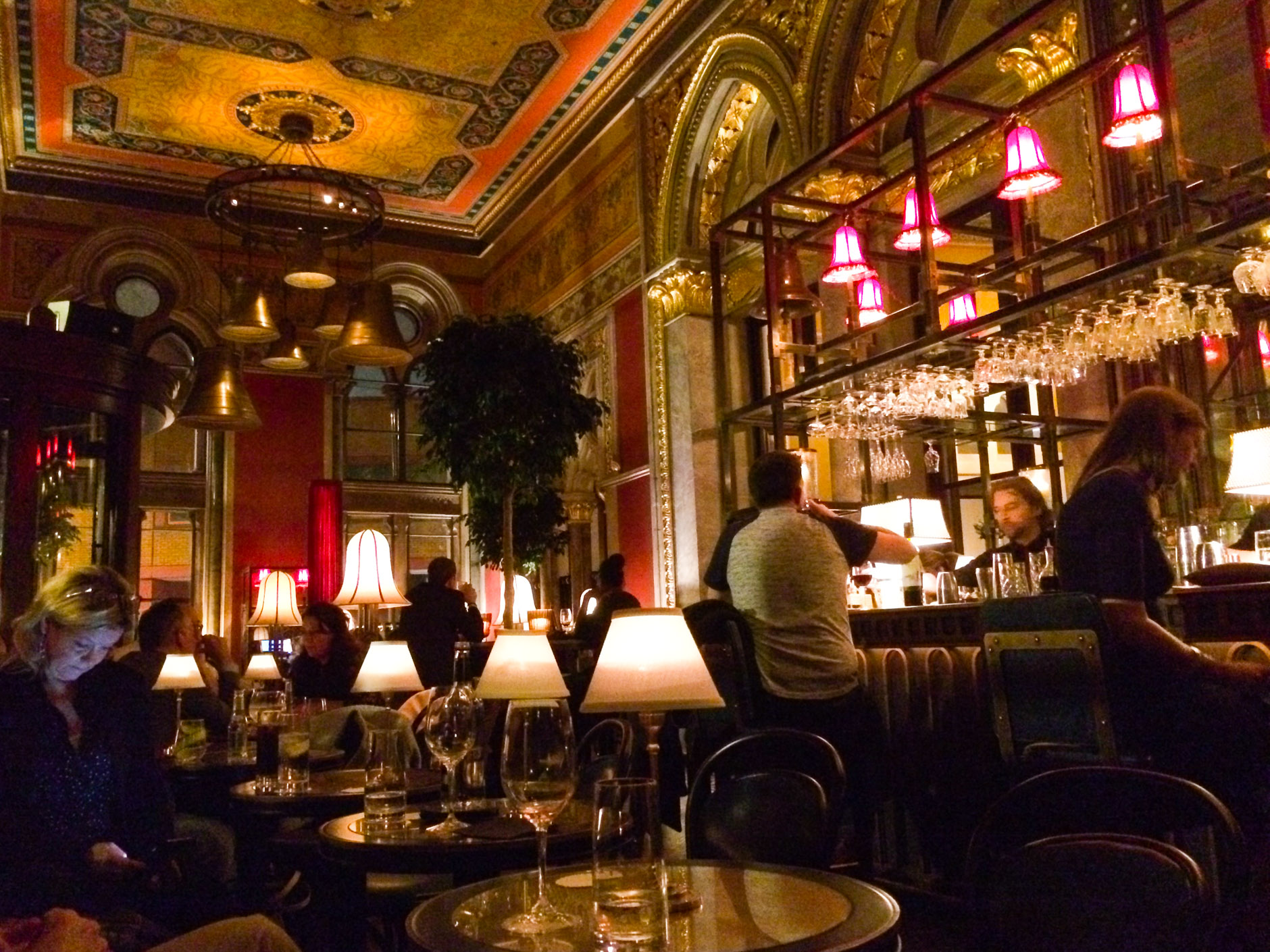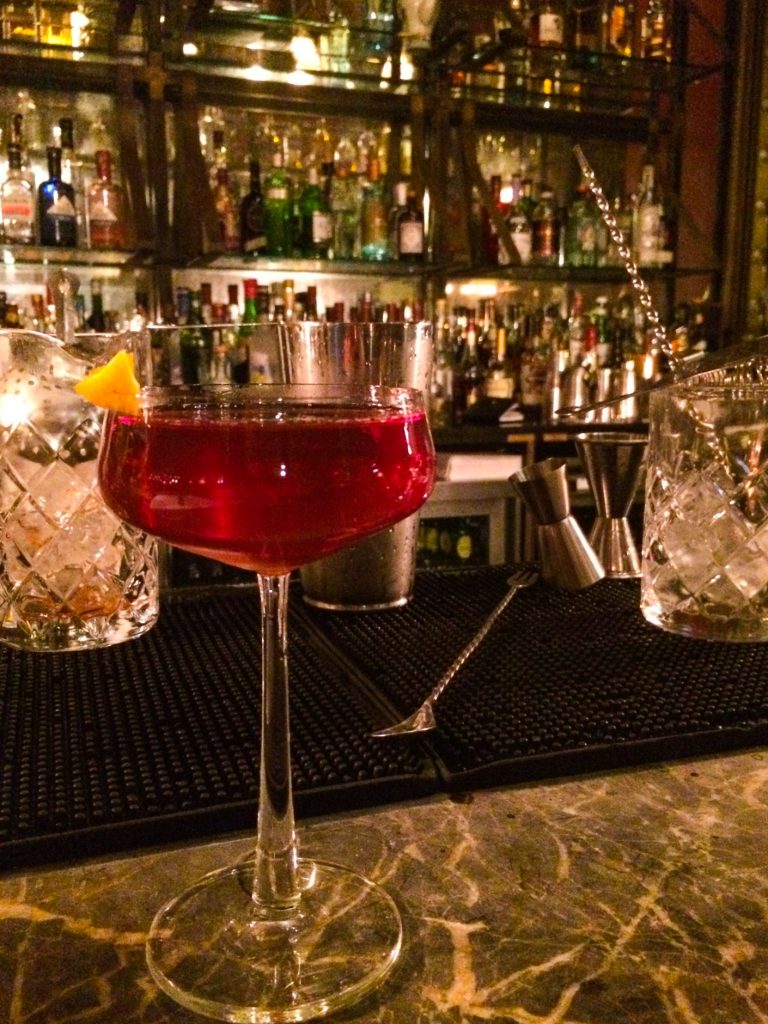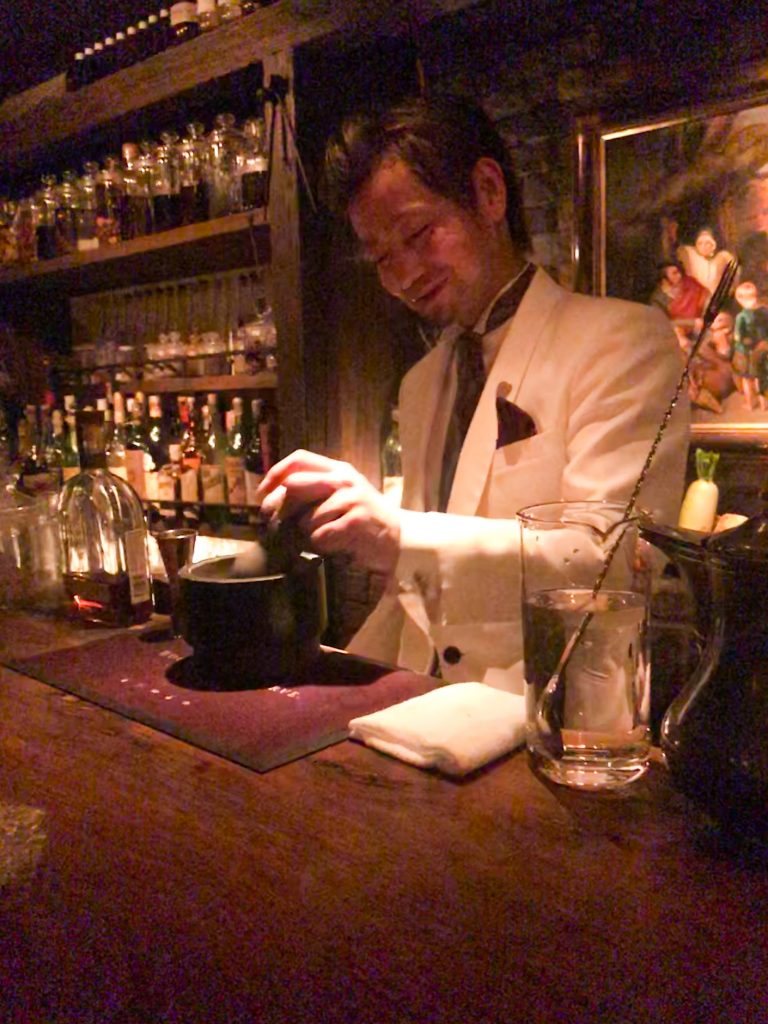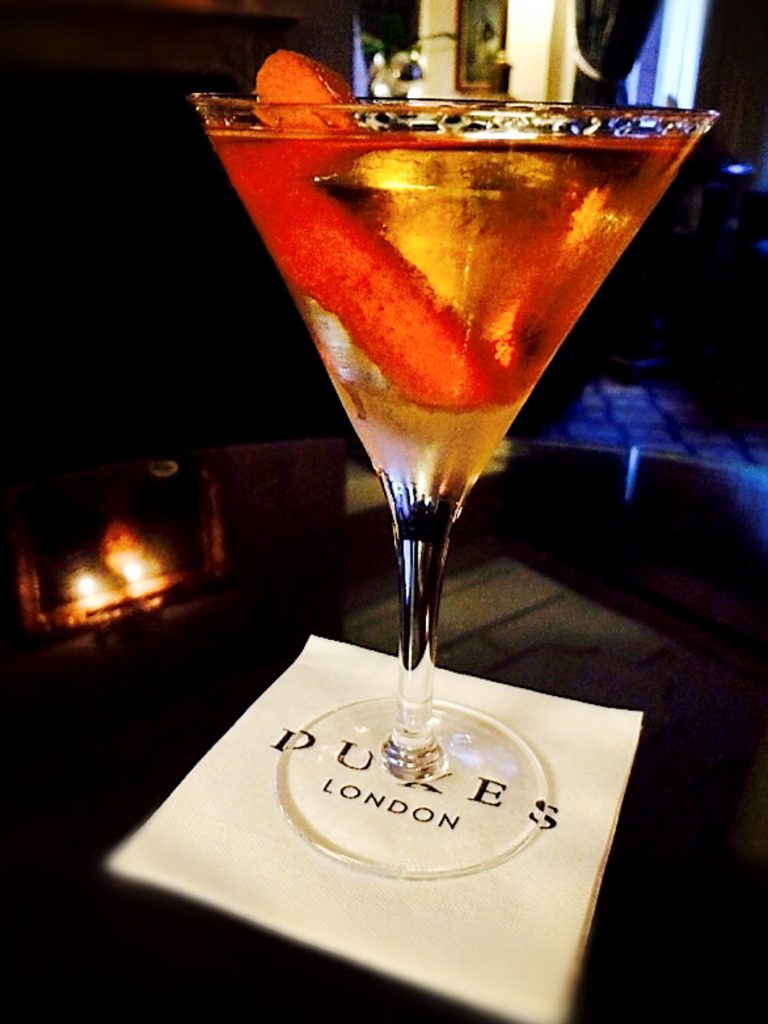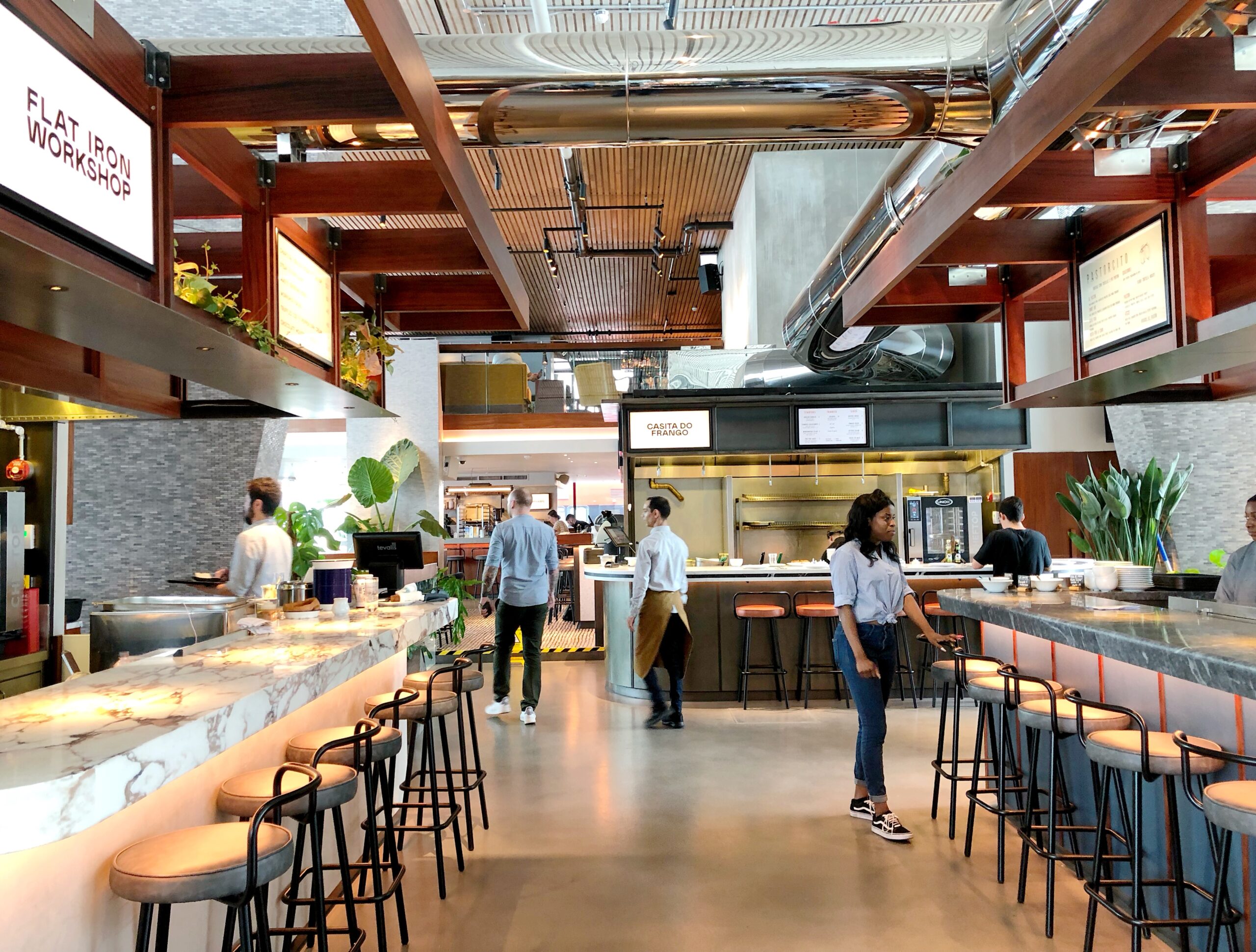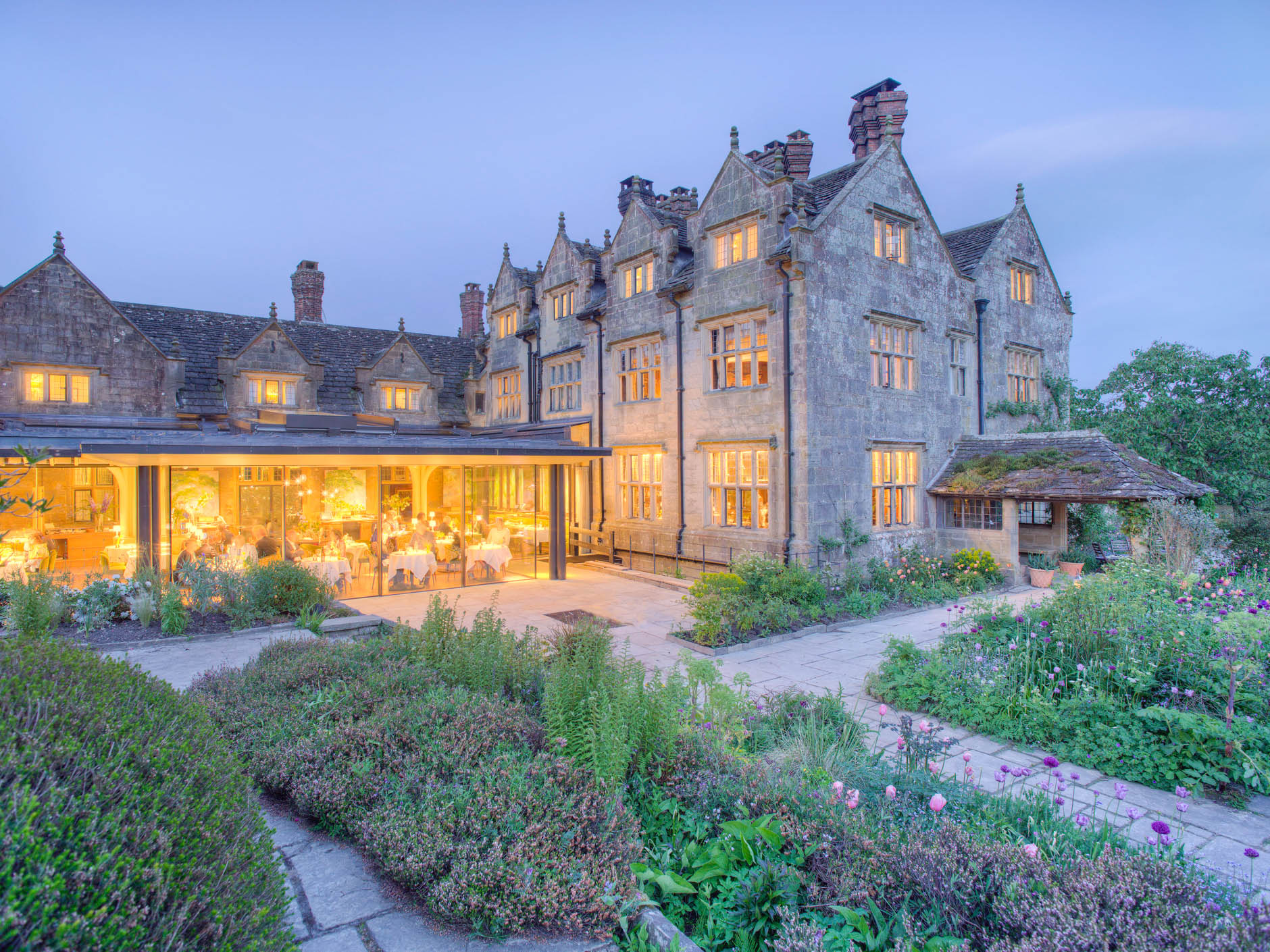It seems no one is safe from the impending robot revolution. The MakrShakr, a system of robotic bartenders that made its debut on Royal Caribbean cruise ships, has the potential to rid the world of barmen. It is faster than a human, more accurate, stores thousands of recipes, and would not grumble when some mischievous customer orders a Ramos Gin Fizz at closing time. Imagine how the nightclub or music festival will change when one no longer has to fight one’s way through a horde of thirsty revellers to order an overpriced, watered-down gin and tonic. I saw for the first time, in an airport lounge, a beer robot that pours the perfect pint every time. As a means of getting alcoholic beverages from a bottle to the customer, machines have a significant advantage over human beings. Yet I suspect watering holes of such a derivative nature are not the kind of drinking establishments Palate readers frequent, who would probably find The Gilbert Scott, Duke’s and The Library more familiar. These intimate wood-panelled rooms with a handful of seats do not merely sell drinks, but an experience of which the human bartender is integral.
In a city halfway across the world, even the World’s Best Bar, the American Bar at The Savoy, would be considered high-volume and crass. This city is of course, Tokyo, where the institution that is the Japanese Bar has stood the test of time, surviving Prohibition, the War and the Lost Decades. The Japanese Bar somehow has a common aesthetic: a simple, quiet space playing 1940s swing jazz on the loudspeakers. A bar counter made of a single piece of wood, uplighters or flickering candles barely illuminating the room, which is perfectly fine since there is no menu to peruse. It is a place where salarymen come after work for their usual drink and a cigarette – smoking indoors somehow still legal. These bars are spaces carved out from the dense architecture of Tokyo, popping up in minute basements and multi-storey car parks. They are most common in the glittering Ginza district, somewhere where men can catch a breather while their wives and girlfriends shop. Tokyo is the only city where one could visit a bar and immediately feel like they have been transported into a different era. Now that I live here I begin my search for my local bar, a replacement for The Gilbert Scott, amidst the panoply of amazing options.
A bartender has to be able to understand the needs of their customers, taking nonverbal cues that a machine simply cannot
Bar Oak at the Tokyo Station Hotel bears the most resemblance to European railway station bars and seemed like a good place to start. Master bartender Hisashi Sugimoto and his team of three mix up delicious classic cocktails without ever needing a jigger or measuring cup. Perfectly made Manhattans, Martinis and Gimlets are the name of the game here. However, the house cocktails like the “Tokyo Station” and “1915”, the latter of which is suspiciously blue, are decent but nothing worth writing home about. To paraphrase Ron Swanson, I do not drink alcohol from that part of the colour spectrum! I left Bar Oak happy, but pretty sure it was not going to be my regular haunt. Perhaps that is just how it is going to be for a foreigner like me in a foreign land?
A bartender has to be able to understand the needs of their customers, taking nonverbal cues that a machine simply cannot. This is difficult in a foreign country where the language and cultural barriers are simply too high. At Bar High Five, Hidetsugu Ueno takes his role as an ambassador of Japanese bartending very seriously. As one of the few confident enough to hold a conversation in English, he travels around the world showing off the famous Hard Shake, a cocktail shaking technique that apparently moves ice around the shaker in an oblique motion, creating a thick foam and micro-shards of ice. The classic cocktails are obviously delicious; I tried a White Lady and a Last Word, both of which were balanced well. What dampened my experience was the flowchart the bartenders used to determine what bespoke cocktail to serve. After the hassle of asking what base spirit I wanted, if I like it fruity or smoky, long or served up, they finally came up with the Full Bloom, a sakura and whisky cocktail that I was no longer sure I wanted. Make no mistake it was good, but the execution was so clunky they might as well have given me a menu and asked me to choose a drink from it.
This exasperating search for my favourite Japanese bar led me to Bar Benfiddich in Shinjuku. At Benfiddich, the bartender Hiroyasu Kayama creates unique and amazingly complex cocktails driven by his obsessions, herbs and absinthe. One of these is the Fresh Campari Cocktail, which as the name suggests, involves Mr Kayama making a Campari substitute from scratch, grinding up dried herbs with a mortar and pestle. Another mystical invention is the Bourbon and Root Beer cocktail, which uses the mortar and pestle technique to turn a college dormitory staple on its head, becoming a rich, spicy and heaty masterpiece. The simple things are done well too: In December, I was served a Citrus Tachibana gin and tonic, the seasonal Japanese mandarin elevating the drink with perfumed tartness. Unlike High Five, Mr Kayama manages to anticipate the customer’s preferences naturally, while maintaining a cheeky grin on his face. It remains the only bar in which I have yet to order a Martini.
A good bar is more than just a place with good drinks
A good bar is more than just a place with good drinks. In Benfiddich, I found a bar I could return to and I have done so on multiple occasions. Every time, I try something new that I liked. This is a bar where regulars can sit down, and without asking, receive a drink from Mr Kayama with a knowing nod. Even though the décor may be tacky and Ludovico Einaudi’s In a Time Lapse plays on loop every single time, I love it. In Star Trek: The Next Generation, Captain Picard could order a cup of tea from the computer but would still rely on Whoopie Goldberg’s Guinan for counsel and company over a cocktail. Tokyo to me might as well be the 24th century USS Enterprise but in this alien environment I think I’ve found my place.
Bar Oak
Tokyo Station Hotel
Tokyo 110-0005
Bar High Five
Ginza 5-4-15 Chuo
Tokyo 104-0061
Ben Fiddich
Nishishinjuku 1-13-7 Shinjuku
Tokyo 160-0023

